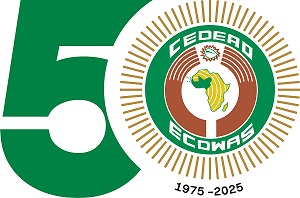Frequently asked questions about Procurement
14 May, 2025
- What is procurement?
- Procurement is the process of acquiring goods, services, or works from an external source.
- What are the key stages of the procurement process?
- The key stages typically include identifying needs, supplier selection, negotiation, contracting, order placement, supplier performance evaluation, and payment.
- What is the difference between procurement and purchasing?
- Purchasing is a subset of procurement and refers specifically to the act of buying goods or services. Procurement encompasses a broader range of activities, including strategic planning, supplier management, and contract negotiation.
- What factors should be considered when selecting suppliers?
- Factors to consider include price, quality, reliability, reputation, geographical location, sustainability practices, and compliance with regulations.
- What is a Request for Proposal (RFP) and when is it used?
- An RFP is a document used to solicit proposals from potential suppliers, detailing requirements and evaluation criteria for a particular project or procurement need.
- How does procurement contribute to cost savings and efficiency?
- Procurement helps identify cost-effective suppliers, negotiate favourable terms, streamline processes, and reduce waste, ultimately leading to cost savings and improved efficiency.
- What are the risks associated with procurement, and how can they be mitigated?
- Risks include supply chain disruptions, quality issues, legal and regulatory compliance, and supplier dependencies. They can be mitigated through effective risk management strategies, diversification of suppliers, and thorough due diligence.
- What is the role of procurement in ensuring compliance with regulations and policies?
- Procurement ensures compliance by adhering to relevant laws, regulations, and organizational policies throughout the procurement process, such as anti-corruption laws, environmental regulations, and ethical sourcing policies.
- How is procurement performance measured?
- Procurement performance can be measured using key performance indicators (KPIs) such as cost savings, supplier performance, cycle times, compliance rates, and customer satisfaction.
- What strategies can be implemented to improve procurement processes and outcomes?
- Strategies include implementing e-procurement systems, fostering strategic supplier relationships, leveraging data analytics for decision-making, standardizing processes, and investing in continuous improvement initiatives.
- What are the different procurement methods, and when is each method appropriate?
- Procurement methods include open tendering, selective tendering, direct procurement, framework agreements, and electronic procurement. The choice of method depends on factors such as the complexity of the requirement, urgency, and market conditions.
- What is the importance of supplier diversity in procurement?
- Supplier diversity promotes inclusion and provides opportunities for historically disadvantaged groups such as minority-owned, women-owned, and small businesses. It enhances competition, innovation, and economic development while reducing supply chain risks.
- How does technology impact the procurement process?
- Technology improves efficiency, transparency, and collaboration in procurement. It enables e-procurement, electronic auctions, and contract management systems, spend analysis, and supplier relationship management tools.
- What are the best practices for negotiating contracts with suppliers?
- Best practices include conducting thorough research, defining clear objectives, building rapport with suppliers, exploring win-win solutions, and documenting agreements in writing to mitigate disputes.
- How do you assess the quality of goods and services procured?
- Quality assessment involves defining quality criteria, conducting supplier audits, performing product inspections, obtaining user feedback, and monitoring performance against agreed-upon standards.
- What role does risk management play in procurement?
- Risk management involves identifying, assessing, and mitigating risks associated with suppliers, contracts, delivery delays, geopolitical factors, and market volatility to safeguard organizational interests.
- How does procurement support strategic organizational goals?
- Procurement contributes to strategic goals by aligning sourcing decisions with organization’s objectives, fostering innovation through supplier collaboration, reducing costs, and enhancing competitiveness in the marketplace.
- What are the ethical considerations in procurement, and how are they addressed?
- Ethical considerations include fair treatment of suppliers, avoiding conflicts of interest, preventing corruption, respecting human rights, and adhering to codes of conduct and industry standards. They are addressed through ethical guidelines, training programs, and ethical sourcing practices.
















